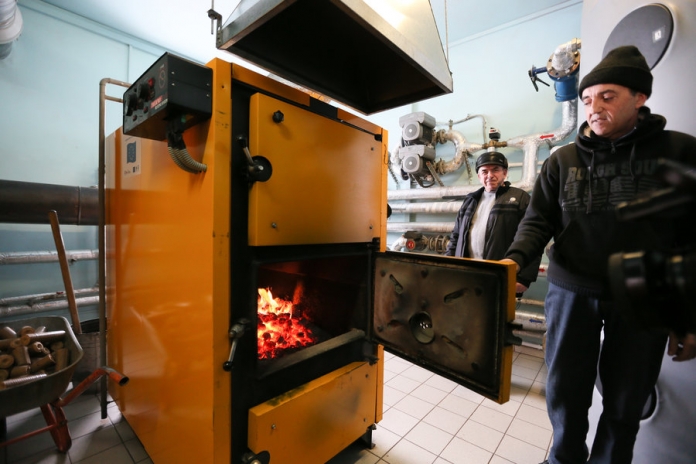Even if it is midsummer, public institutions – schools, kindergartens, hospitals – prepare from now for the cold season. And as a good master prepares his sleigh in summer, in the same way managers of institutions are concerned in advance about purchase of wood, coal, briquettes, pellets, etc.
It seems that the procurement procedure has already become an exercise of mayors, directors. But as the legislation in the field has been recently amended, heads of institutions who switched to biofuel-based heating do their homework learning the new provisions step by step.
The project “Energy and Biofuel” comes to help those who manage biomass boilers, launching the “Guide on Public Procurement of Biofuel”. The operational manual developed for public authorities using biomass heating systems, was recently delivered to users at Cimislia at a workshop organized with the support of the Directorate of Economy and Attraction of Investments of Cimislia Rayon Council.
The Guide is designed for public authorities using biomass heating systems and businesses-manufacturers and suppliers of biofuel as bidders within public procurement procedures.
According to Ecaterina Meaun, expert in public procurement and consultant within the Energy and Biomass Project, the Law no. 131 of 03 July 2016 on Public Procurement entered into force on 01 May 2016, which is why the objective of this Guide is to facilitate interpretation and understanding of the new provisions of public procurement tailored to the need to purchase biofuel.
The Guide includes descriptions of procurement procedures, which can be used for the procurement of biofuel, i.e., value thresholds, description of elements of the tender documentation, procurement file; bid evaluation criteria. Particular attention is paid to the way of procurement through a framework agreement and the bid evaluation criteria based on biofuel parameters.
Considering these points, the trainees studied step by step, assisted by an expert, the methods and the mechanism of a public procurement, including the advantages of association to procure biofuel, which are the components of an invitation to the public procurement, the elements of the tender book for procurement of a biofuel and the procurement contract, etc.
The Guide is divided into distinct chapters, each of them being structured on listing concrete steps and main operational elements, so that use of this guide is easy and the user finds exactly the information that interests him/her.






